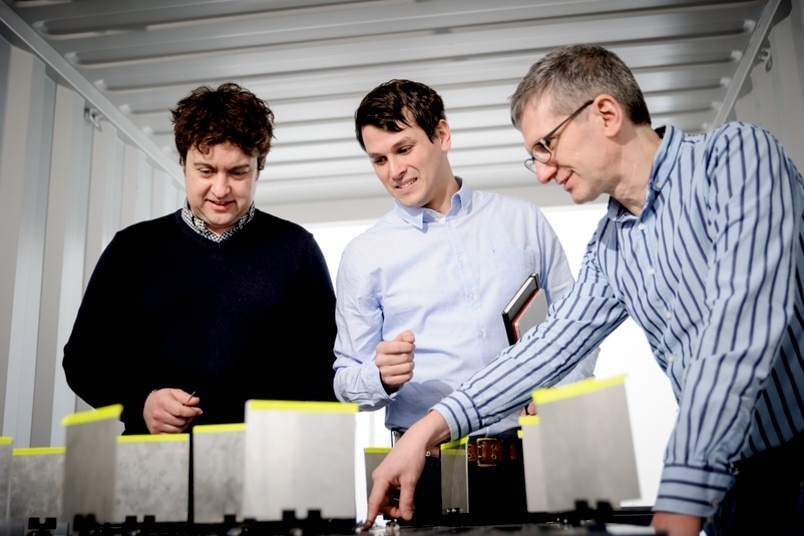A technology that makes the monitoring of alterations in nuclear silos easier without the need to divulge secret information about the stored weapons has been developed by an international IT research group from Bochum, Princeton, and Harvard. Researchers anticipate that in future, it will assist in verifying whether nations comply with disarmament treaties. Radio waves are used for physically monitoring the rooms, and an advanced cryptographic technology prevents the manipulation of the process.
 The project team in Bochum: Ulrich Rührmair, Christian Zenger, and Christof Paar (from left to right) (Image credit: Roberto Schirdewahn)
The project team in Bochum: Ulrich Rührmair, Christian Zenger, and Christof Paar (from left to right) (Image credit: Roberto Schirdewahn)
Researchers believe that monitoring nuclear weapons is the most challenging task: here, potential attackers are not a small group of hackers or other criminals, but countries as a whole. The nations have at their disposal access to high-tech offensive technology as well as virtually endless financial resources.
In this interdisciplinary study, researchers from the Bochum-based Horst Görtz Institute for IT Security (HGI) have closely collaborated with US-American colleagues from Princeton University and Harvard University. The study has been reported in the science magazine Rubin.
Radio-Wave Map Indicates Changes
Researchers set up electromagnetic waves in the radio frequency range for recognizing changes in a nuclear silo. A distinctive radio-wave map of the room is generated when the waves are reflected by objects and walls. Any amendment - for instance, removal of a weapon from the storage facility - would cause changes in the reflection pattern and can hence be identified. Therefore, it is possible for country A to monitor the nuclear silos of country B by periodically requesting for radio-wave maps of the room.
“However, we must make sure that a country cannot generate a radio wave map of a fully stocked nuclear silo in advance and then continues to send it to country A, even after the weapons had long been removed,” clarified HGI’s Dr. Ulrich Rührmair. To achieve this, the researchers have incorporated a supposed challenge into the system, that is, a difference in the request for a radio-wave map between the nations.
Preventing Deception
In the room to be monitored, 20 rotating mirrors that can be remotely adjusted are installed. The radio waves are reflected by the mirrors, thereby altering the reflection pattern in the room, where each mirror setting generates an individual pattern. Before the request is sent, the mirrors would be arranged in a specific way by country A. In return, country B is required to send the radio-wave map of the room with precisely the same mirror arrangement to country A. This can be achieved only on the condition that country B measures the room live with radio waves and the current mirror setting every time. Radio-wave maps recorded in prior would prove futile.
The reply can be verified by country A only if the reflection patterns for several different mirror settings were measured and saved when the technology is initially executed.
Mirror Arrangement Must not be Predictable
Presently, the IT security researchers are testing the system in a container at Ruhr-Universität, by means of dummy weapons and 20 mirrors. This setting allows the development of billions of sextillions different mirror arrangements. “The challenge is to make sure that the monitored country doesn’t learn to predict the next mirror setting over time,” noted Professor Dr. Christof Paar, an HGI researcher. If this is achieved, the country will be able to produce the necessary radio-wave map without scanning the room afresh.
To avoid this situation, the IT experts from Bochum set up an unpredictable cryptographic protocol for the alignment of the mirrors. “The important thing is to ensure that the correlation between the challenge and the reply cannot be described by a system of linear equation,” added Zenger. “This is because such systems are relatively easy to figure out in mathematical terms.” The same holds true for the physics, that is, the mirror materials: it is important that their reflection properties are also not linear.